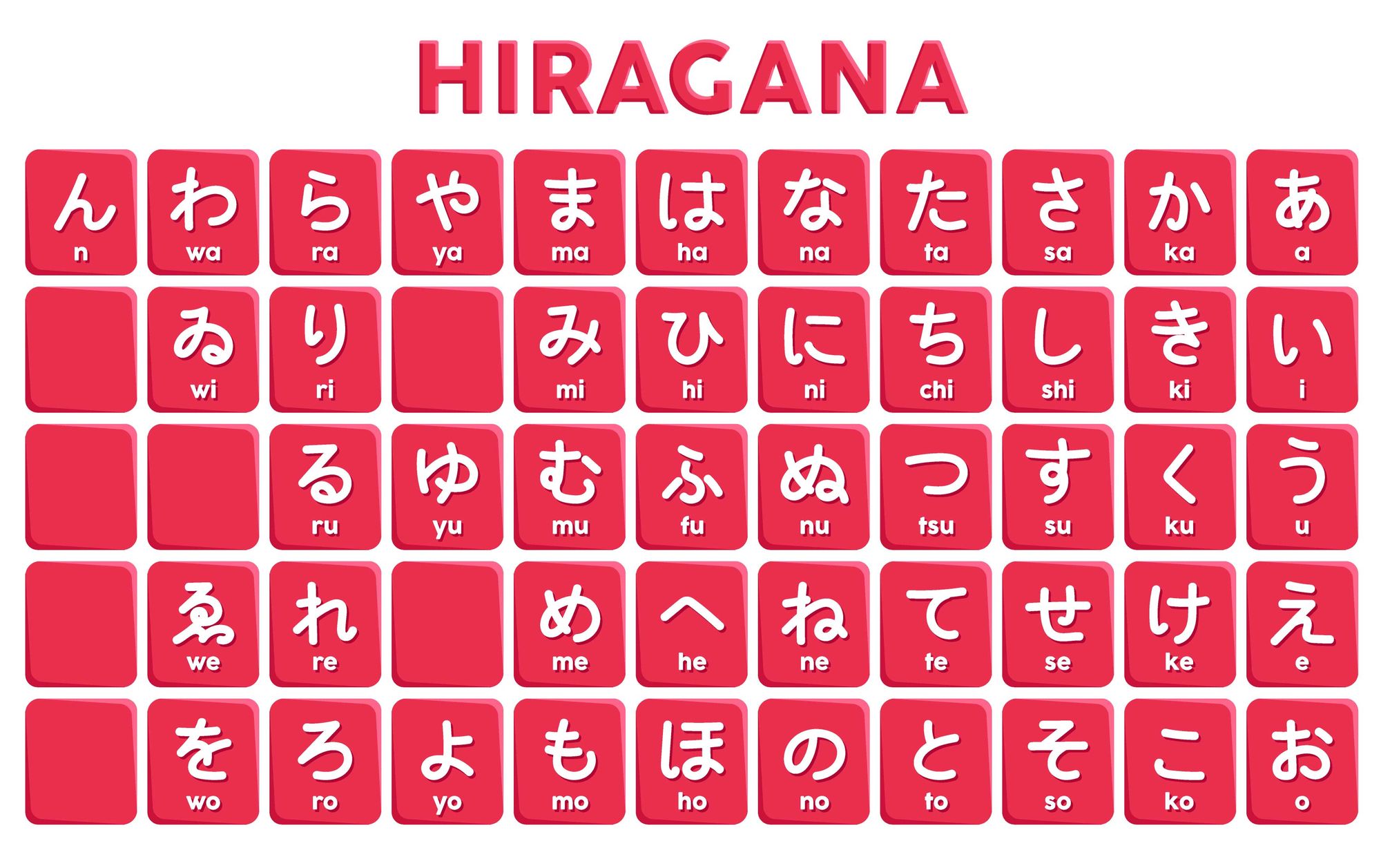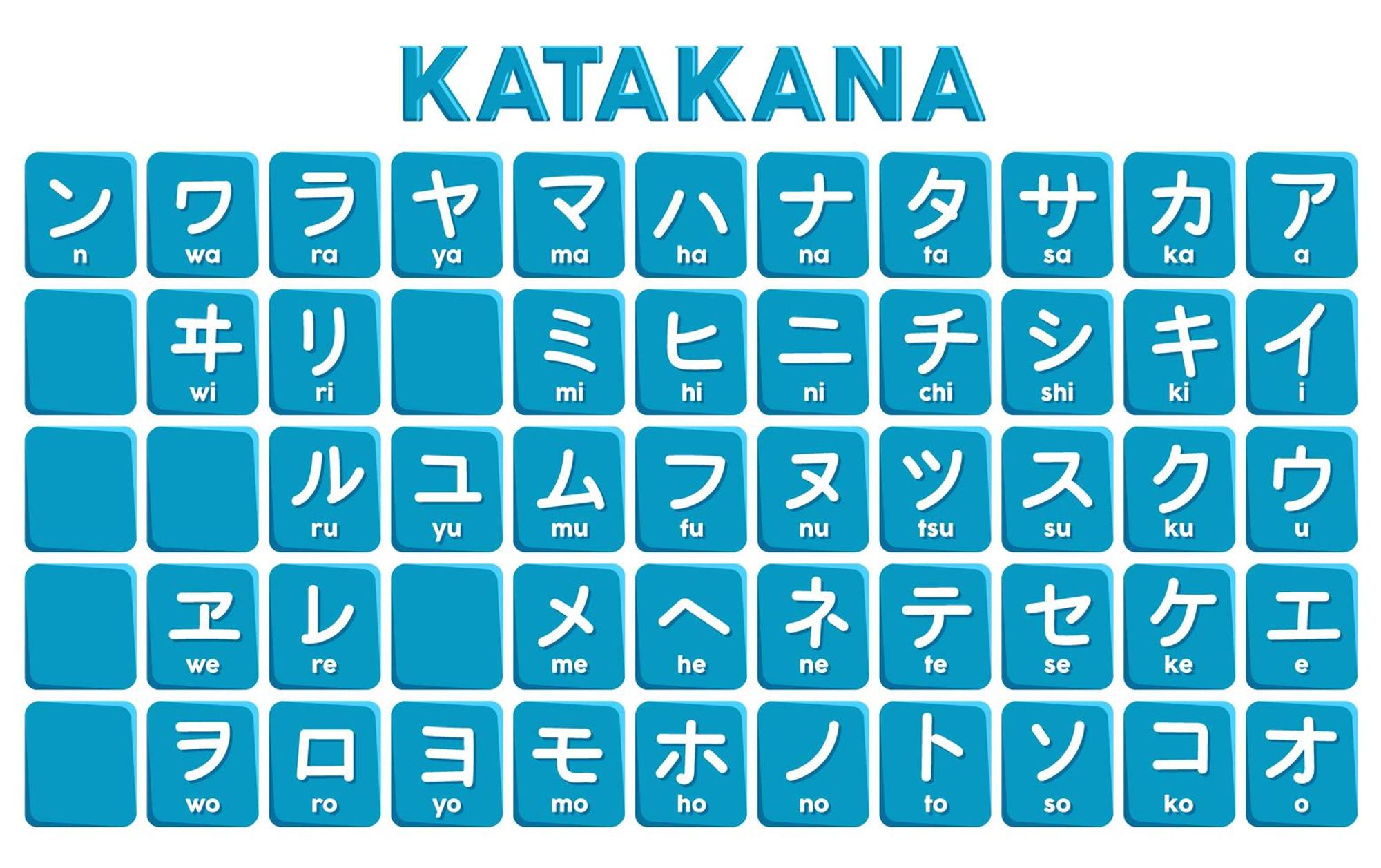Have you ever wondered how to learn Japanese on your own? Some consider learning Japanese hard, others find it easy. Either way, most things can be quick and easy if the right steps are taken during the learning process, Japanese is no exception. Of course, figuring it out can be very annoying. Luckily, you have hit the jackpot!
This article is dedicated to giving you some beginner guidelines on how and where to start. By following these tips and tricks, you will surely start off your Japanese learning journey with a bang!
How to Learn Japanese in 10 Steps
Let’s start by considering some important steps in order to learn Japanese:
1. Familiarize yourself with Hiragana.
One out of three elements in the Japanese writing system (collectively called Kana), is used to phonetically spell out Japanese words. Your learning journey will start here as Hiragana is crucial to understanding the steps that follow. There are 46 characters in this system, each with its own unique sound. It is important that you first learn how to read and pronounce each character before you can even think about writing it. This method improves the actual speaking part of your journey in the long run.
Below is a table comprised of basic Hiragana characters and how to pronounce them, just so you can get the basic idea:

2. Familiarize yourself with Katakana
When learning how to learn japanese, the best thing is to learn Katakana, the second out of the three Japanese writing systems. As I mentioned before, understanding the pronunciation and how to read Hiragana is a prerequisite to Katakana. Whereas Hiragana is used to represent Japanese words, Katakana, on the other hand, is used to pronounce foreign words. These characters are derived from components of complex Kanji (more on this later).
Below is a table comprised of basic Katakana characters and how to pronounce them, again, just so you can get the basic idea:

3. Try to avoid Romaji
When you mush Latin and Japanese together and create some form of romanized Japanese. Romaji is the walking red flag in the world of the Japanese language, avoid it. There are many reasons for it, but in a nutshell:
- It is extremely confusing to learn since there is no uniform system, i.e, there are too many versions of it. It is hard to know which one to stick to.
- Learning it can mess up your pronunciation of actual Japanese words, which makes you look like you are studying Japanese wrong.
Overall, a really bad time.
4. Learn some vocabulary
Before diving head first into really complex expressions and words, rather start with the basic ones. Words that can appear in everyday conversation can be extremely useful in the long run, in both learning and making new friends! Stick to loan words for now, that is, words that are close to English ones. Below are some of these words to help get you started:
- Yes:
hai (はい), pronounced similar to “Hi”.
- No:
iie (いいえ)
- Hello:
- Goodbye:
ja ne (じゃね)
arigatou (ありがとう )
- I’m Sorry:
gomen nasai (ごめんなさい )
- Excuse me:
sumimasen (すみません)

5. Learn Grammar
An important concept in every language. Patterns of grammar are different in Japanese than what we have in English. There are a lot of rules, the very basic things to know are as follows:
- The main verb always goes at the end.
A sentence may contain many verbs (doing words), but the main idea or action of the sentence (The main verb) always goes at the end of a sentence. This verb is also usually marked with a particle (more on this later).
- Japanese only has present and past tense.
The present tense is used instead of the future tense.
- There are formal and informal Japanese speeches.
The former way of speaking is to show respect to one’s boss or colleagues, the latter is used with family and friends.
- Words don’t have gender
In a language such as Spanish, words are either feminine or masculine. In Japanese though, there are no gender differences which makes learning a lot less difficult.
- A lot of suffixes.
There are many types of counter suffixes that are used to quantify a certain type of object.
6. Learn to Type Hiragana
Now that you know how to read and pronounce Hiragana, you should now be ready to enter the next step: to type it! It’s pretty straightforward, you just need to choose the Japanese keyboard setting in language settings or install an app for your phone or computer. Maybe try to practice with a friend by sending them a text in Hiragana. If they are learning with you, ask them to send one back and see if you can read it.
7. Understand the Concept of Kanji
The final Japanese kana that we will be discussing. Kanji consists of ideograms, which means that each symbol has a specific meaning to it. Symbols can be used on their lonesome or connected with other symbols to create a word. Kanji is especially important if you plan on living/working in Japan as it is regularly used on almost everything— from restaurant menus to documents. There are a lot of them, so learning them will take a while— but just imagine how awesome it would feel if you can read the majority of them? You will leave your friends in awe!
8. Learn Basic Pronunciation
If you got the basic idea of pronouncing Hiragana or Katakana characters, then the basic pronunciation of Japanese words should be a piece of cake! When learning how to learn Japanese, the best way of mastering this is listening to a native pronounce the words and getting used to them. Pay attention to all the sound variations of the different words, as it is crucial in understanding how to pronounce the individual words correctly.
9. Learn Japanese Particles
Particles are grammar units that connect sentences or break them apart. The sooner you get the hang of this, the better. One particle alone can do a lot of things, it depends on the sentence.
For example, the hiragana character は (Which is “Ha” but actually read as “wa”) is a topic marker. It can highlight what the speaker is focusing on in their sentence, show contrast, or appear before a negative verb.
Alongside the topic marker that we have discussed, a place marker like に and an objective marker like を should be focused on first before you get into the nitty-gritty side of particles.
10. Learn Basic Expressions
After learning basic Japanese words, the next step would be to use those words and learn some basic expressions! After all, the theory does require practice. Try to first stick to expressions that can be used in daily interactions. Such as:
- How are you?
Ogenki desu ka? (お元気ですか?)
- And you?
_______–san mo? (______-さんも?).
You fill the blank with the name of the person you are talking to.
- What’s your name?
Namae wa nan desu ka? (名前は何ですか?)
- And in English, that’s…?
Eigo te iu no wa…? (英語ていうのは)
- I’m not very fluent in Japanese
Nihongo de perapera de wa nai desu (日本語でペラペラではないです)

5 Tips to Learn Japanese Faster
As the saying goes: work smarter, not harder! Below are some tips and tricks to improve your Japanese much quicker:
1. Find a conversation partner and speak every day
Speaking the language and hearing it being spoken back to you is probably one of the best and easiest ways to learn a new language quickly. So, go out and find someone who is interested in learning Japanese as well, or better yet, someone who is fluent in/native to Japanese. A nice way to make new friends as well.
2. Pick an Anime to watch
When you just don’t want to socialize with someone but still want to hear the language being spoken— or maybe you just really don’t feel like picking up a book and using too many brain cells. Relaxing with an episode (or an entire season) of an anime should be right up your alley. Subtitles can act as a reading exercise while the characters speaking can help you with pronunciation. Entertaining and educational.

3. Download apps
AmazingTalker’s APP is available on:
Apps like Duolingo make learning languages fun and easier to understand. They also provide daily challenges in order to keep you motivated. Besides Duolingo, there are a lot of options to choose from. Do you find them too boring to even consider downloading? Well, mobile games that teach you Japanese are available as well. One such game that comes to mind is KawaiiNihongo: Learn Japanese.
4. Find an online Japanese tutor
Struggling to learn a language on your own can be quite daunting and probably take a very long time. Having a professional Japanese speaker teach you the proper way of reading, writing, and speaking Japanese is a sure-fire way to get the hang of it faster. You can also rest easy knowing that you are studying it properly!
5. Use Flashcards
Flashcards have been proven time and time again to help you remember stuff in the long run. Using it to learn or even freshen up your Japanese ends up with the same result: Long term memory. You will be surprised at just how clearly you can remember words by using this method.

Books and Resources to Help You
If grabbing a book and learning at your own pace is more your thing, or maybe you just need more studying material, below are a few recommended sites and books to help:
1. Nihongo Master
An online learning platform that aims to make learning Japanese as fun as possible. You can find an entire plethora of useful learning material from video lessons, to a native Japanese speaker to show you how to pronounce words correctly. They use manga-style characters and a point system in which you earn points by taking quizzes or drills to help you stay motivated.
2. Genki
This is one of the most extremely effective and beginner-friendly books that you can find. It cultivates overall language ability by covering listening, speaking, reading, and writing Japanese. It introduces words and expressions that are tied to everyday life and even includes an audio CD companion. Not to mention that the book contains hilarious skits that will surely motivate you to continue your studies!
3. Minna no Nihongo
A book for more general Japanese learning. It is the most used Japanese learning text for tutoring and for conversation classes in Japan. The cool part is that the entire book is written in Japanese, as such, you require a separate Japanese “Translation and Grammatical Notes” book in order to read it. Not for complete beginners but definitely a book that can improve your Japanese to a fuller extent.

4. NHK News Web Easy
A news website that contains news articles, which are all written in Kanji. You can practice your Japanese while reading these real-world news articles. The cool thing is, the website gives you the definition of each word if you struggle— just hover your cursor over it! This is an excellent way to learn how to apply Japanese in real life.
5. Jisho
Jisho is an online Japanese-English dictionary. Here you can easily find words, kanji, and even example sentences of the word that you are looking for. This is a great way to find that word you just can’t remember or find the Japanese version of. Definitely a tool to keep close while you are learning.

Stay Motivated!
To stay motivated when learning Japanese by yourself is significantly harder than in school or college. Luckily, there are some tricks that can help you stay motivated:
1. Make it a habit!
Make learning Japanese a habit by incorporating it into your daily routine. The best way to do this is to schedule a time to learn and stick to it, it helps to be specific on what you are going to be learning in this time slot
2. Set goals!
It is important to be realistic when setting your learning goals. It is almost guaranteed that you will feel really good when completing one, no matter how small and another benefit is that you will be very motivated to work towards finishing your next goal!
3. Have fun!
There are many ways to study the Japanese language, try to find a method that is fun for you to do. Studying will then feel the same as playing a video game or watching a movie— you will get a lot of things done and complete a lot of goals, which in turn, will motivate you more. It is a positivity circle!
4. Accountability is key.
Let people around you know about your studies and hold yourself accountable. Having other people proud of you when completing one of your Japanese goals is a good ego boost and fuel for motivation. You will also be less likely to give in to failure, you don’t want to disappoint those that are cheering you on.

How about some words of wisdom to motivate you? See if you can pronounce ‘em!
-
Chansu wa jibun de tsukuru mono (チャンスは自分で作るもの。)
Meaning: You create your own opportunities.
In life, you can’t wait for an opportunity to learn or improve to just fall out of the sky. You must create one!
-
Nito ou mono itto mo ezu. (二兎追うもの一兎も得ず。)
Meaning: He who runs after two hares will catch neither.
Scrambling to complete many things at once is a recipe for demotivation and ultimately, a massive disaster. Remember to take it one thing or goal at a time!
-
Shippai wa seikou no moto (失敗は成功のもと。)
Meaning: Failure is the stepping stone to success.
No one likes to fail, but it happens, and when it does— well, it’s okay. Failure is okay. What you do afterward is what’s important. Learn to see failure as a lesson and an opportunity to get better. Most importantly; Stay positive!

Konochoushide Ganbare!(このちょうしで がんばれ!- Keep it up!)
Studying a new language can be hard, but with this guide in hand, you will be one step closer to reaching your Japanese fluency goals. Keep at it and one day you will be able to speak and write Japanese without even thinking about it! As mentioned before, you can learn Japanese even faster with a good Japanese tutor or conversation partner. Luckily, you can find the best online Japanese courses right here!
Whether you are learning Japanese or any other language, having a tutor in your corner can help speed up the learning process and at AmazingTalker, you can find just that. You can even plan lessons according to your schedule. Sugoi!(すごい!- Super!)
















